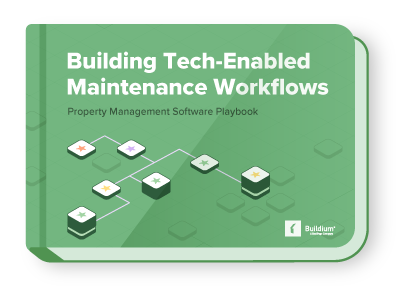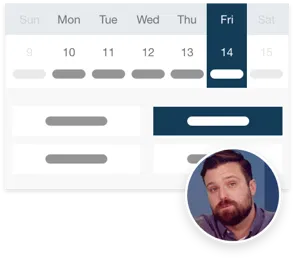Disclaimer: This post is intended to inform property managers on how to write a lease agreement for an apartment and does not constitute legal advice. Before creating your own agreements, it’s always a good idea to speak with a legal professional to be sure you’re covering all your bases.
Start your free trial today!
Try Buildium for free for 14 days. No credit card needed.
Start Your TrialAs a property manager, one of your most important responsibilities is creating a lease agreement that both protects the property owner’s interests and sets clear expectations for tenants. When crafted properly, a lease agreement can be a bedrock of trust that helps minimize disputes and create a positive rental experience for everyone involved in the properties you manage.
In this post, we’ll walk you through how to write a lease agreement for an apartment that covers all the necessary bases, helping you avoid headaches and maintain a stress-free, professional relationship with your tenants.
What Is a Lease Agreement for an Apartment and Why Does It Matter?
Let’s start with the basics. A lease agreement for an apartment is a written contract between you (the property manager, on behalf of the landlord) and the tenant, outlining the terms under which the tenant will occupy the property. It protects both parties by clearly stating what is expected of each side and what the consequences will be if those expectations aren’t met.
Types of Lease Agreements
There are several types of leases, and choosing the right one depends on the property and your goals. Here’s a breakdown of the most common types:
- Fixed-Term Lease: This agreement lasts for a specified period, such as one year. The tenant agrees to rent the property for the entire term, offering stability for both the landlord and tenant. If the tenant wishes to stay after the lease expires, you can renegotiate the terms.
- Month-to-Month Lease: This lease automatically renews every month unless either party gives notice to terminate. Month-to-month leases are great if you need flexibility, but they don’t offer the same level of security as fixed-term leases.
- Sublease Agreement: Sometimes tenants want to sublet their space. This agreement outlines the rules for subletting and establishes the relationship between the original tenant, the subtenant, and you as the landlord.
There are several other types of lease agreements, but these are the main varieties that residential property managers use and encounter on a regular basis.
Key Clauses You Must Include in Every Lease Agreement
Your lease agreement must cover all the important terms to keep things running smoothly. Here are the clauses you absolutely need:
Rent Amount and Payment Details: Clearly state the rent amount, the payment due date, and how tenants can pay. Don’t forget to mention any late fees or penalties if the tenant misses a payment. Keep the language simple so tenants know exactly what’s expected.
Security Deposit: Outline the deposit amount and the conditions under which it will be returned. You’ll also want to specify whether any part of the deposit is non-refundable, such as a cleaning fee, and detail what will happen if the tenant damages the property.
Lease Duration and Renewal Terms: Whether you’re using a fixed-term or month-to-month lease, specify the duration and explain how the lease will renew. For fixed-term leases, include the start and end dates, and for month-to-month leases, outline the notice period required for termination.
Tenant Responsibilities: Let your tenants know what you expect from them, such as maintaining the property in good condition, keeping common areas clean, and following noise guidelines. Be clear about any maintenance tasks the tenant should handle, like changing air filters or caring for the garden.
Landlord / Property Manager Responsibilities: You’ll also want to clearly state your responsibilities, such as keeping the property habitable, responding to maintenance requests in a timely manner, and making necessary repairs. Set clear boundaries about when you will enter the property, and how much notice you’ll provide beforehand.
Terms of Lease Termination: This clause should outline how either you or the tenant can end the lease, whether early or at the end of the term. Include details about notice requirements, grounds for eviction, and the procedure if a tenant breaks the lease.
Occupancy and Guest Rules: Clearly state the rules around who can occupy the property. This includes approved tenants, any long-term guests, or subletting arrangements. You can also specify guidelines for short-term visitors.
Local, State, and Federal Laws You Need to Know
You’ll need to stay informed about laws that could affect your lease agreements, from local regulations to federal statutes. Keeping up with these laws helps avoid potential legal trouble. Here are some to keep in mind and be sure to speak with a legal professional for specific advice for your properties and region:
Fair Housing Laws: Under the Fair Housing Act, you can’t discriminate against tenants based on race, color, religion, sex, national origin, familial status, or disability. This law ensures that all applicants have an equal opportunity to rent, regardless of personal characteristics.
Rent Control Laws: In some cities, rent control ordinances restrict how much you can raise the rent. Make sure you understand these laws if your property is in a rent-controlled area to avoid accidentally overcharging tenants.
Security Deposit Limits: Many states limit how much you can charge for a security deposit, usually no more than one or two months’ rent. They may also require you to return the deposit within a specific time frame after the tenant moves out, often 30 days.
Tenant Privacy: Tenants have the right to privacy, and certain laws dictate when you can enter their unit. In most cases, you must give 24 hours’ notice before entering, unless it’s an emergency. Respecting this privacy builds trust and avoids legal issues.
How to Write a Lease Agreement for an Apartment with Clarity and Precision
While a lease agreement is a legal document, it should also be easy to read. Your goal is to avoid confusion and keep everything clear, so both you and your tenants understand the terms. Here are some tips for writing a lease that is both legally sound and user-friendly:
- Use Simple Language: Stick to plain language. Avoid using complicated legal jargon or excessively formal language. Your tenants should easily understand what you’re asking of them, and what they can expect from you.
- Be Specific: Avoid terms like “reasonable” or “appropriate” unless you define them clearly in the agreement. For example, if you’re setting rules about noise, specify acceptable decibel levels, or mention quiet hours to avoid ambiguity.
- Consistency Is Key: If you refer to the “tenant” in one section, don’t suddenly call them “the resident” in another. Consistent terminology helps avoid confusion.
Optional Clauses and Customization
Not all lease agreements are the same, and you may need to add some clauses that are specific to your property. Here are a few examples to consider:
- Pet Policy: If you allow pets, you can specify which types are permitted, the maximum size, or additional pet deposits or fees.
- Parking: If parking is available, outline how many spots each tenant can use, whether there’s a fee, and if guests are allowed to park.
- Subletting: Clarify if subletting is allowed. If you permit it, make sure tenants must get written approval before subletting to ensure you’re aware of who’s occupying your property.
- Renewal Terms: Set the ground rules for lease renewals, such as rent increases and the process for signing a new agreement.
Common Apartment Lease Agreement Pitfalls to Avoid
When drafting a lease, property managers often make some avoidable mistakes. Watch out for these common missteps:
- Ambiguous Terms: Don’t leave room for misinterpretation. Be as specific as possible, particularly in areas like noise restrictions, parking policies, and repair responsibilities.
- Ignoring Local Laws: Failing to update your lease to comply with current local, state, or federal laws can lead to problems. Always stay up-to-date on rental regulations in your area.
- Missing Signatures: Make sure both you and your tenant sign the lease. Without both signatures, the agreement may not be enforceable.
- Overly Restrictive Rules: If your lease has overly strict clauses—such as prohibiting all overnight guests—it could lead to tenant dissatisfaction and potential legal issues.
Our Best Advice on How to Write a Lease Agreement for Apartment
A well-written lease agreement helps foster positive relationships and avoid future conflicts. By following this guide, you’ll be able to create an agreement that’s both legally compliant and practical for your needs.
Some of the best advice for property managers that want to create better lease agreements and manage every lease without taking on hours of extra staff time is to invest in the right software. Platforms such as Buildium make it easy to craft and save lease agreement templates, share leases with tenants, and store all the relevant records for each lease—from contact details and signed documents to payment, communication, and work order histories—all in one place.
However, don’t invest in any solution without trying it out first to be sure it meets your needs. To that end, Buildium offers a 14-day free trial and a guided demo, no up-front commitment required.
If you’re already actively managing tenants, take the time to review your current leases and make necessary updates. After all, a solid lease agreement not only protects your interests but also sets the stage for a positive, long-term rental experience.
Read more on Leasing

